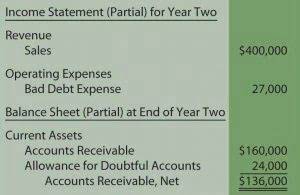
For example, a 2-for-1 stock split would double the number of outstanding shares while halving the price per share. When calculating outstanding shares after a stock split, simply multiply the old number of outstanding shares by the split ratio. Let us consider an example of a company named KLX Inc. in order to illustrate the computation of shares outstanding. During 2018, the company repurchased 0.3 million common stocks and 0.1 million preferred stocks. Based on the given information, Calculate the number of shares outstanding of the company.
- It excludes closely held shares, which are stock shares held by company insiders or controlling investors.
- In other words, a company has issued shares and then bought some of the shares back, leaving a reduced number of shares that is currently outstanding.
- Jeff’s “Small Account Challenge” shows people how to transform accounts from a few thousand dollars into $25k, $50k or even $100k.
- An increase in the number of shares outstanding boosts liquidity but increases dilution.
- Outstanding shares are calculated by subtracting treasury shares from issued shares.
- Evaluating the trend of this number provides useful insights to investors.
They’re also known as stock float and include both common and preferred shares. But the company, as in our example above and using the treasury stock method, has 5 million shares linked to options and warrants. Let’s assume the company also has $500 million in convertible debt with a conversion price of $5. Convertible debt is treated on an “as-converted” basis if the company’s stock is trading above the conversion price. Options and warrants are one aspect of the difference between basic shares outstanding and diluted shares outstanding. For instance, a company with 1 million shares outstanding might only have 300,000 shares as float if the rest are locked in by insiders and institutions.
Types of Stocks You Should Know
To achieve a proper and fair view of the changes in the number of shares and for the calculation of EPS, the method of weighted average shares outstanding is used. Their market cap might be large simply because the share price is high. Shares outstanding are the current number of those shares that aren’t treasury shares. This is important to know because the number of shares outstanding can be far lower than the number of shares issued. Shares issued include the total amount of shares the company issues — restricted shares, public shares, and so on.
Market capitalization is calculated by multiplying the company’s share price by its shares outstanding. Basic shares refer to the number of outstanding shares that are currently outstanding while diluted shares put shares outstanding formula into consideration things such as warrants, capital notes, and convertible stock. In essence, the fully diluted number of outstanding shares tells us the number of shares outstanding there could potentially be.
Understanding Treasury Shares
The company has 4.32 billion authorized common shares, of which 3,119,843,000 have been issued as of December 31, 2014. Next, 336,620,000 shares were held in the company’s treasury at that time, so subtracting this from the number of issued shares means that Johnson & Johnson had 2,783,223,000 outstanding shares at the end of 2014. Basic weighted average shares, on the other hand, represents the above-mentioned weighted average shares outstanding less the dilution of stock options for a specific period.

For this reason, it’s important to adjust the outstanding shares calculation accordingly. Once you locate the line item for preferred stock, take note of the total number of preferred shares outstanding. Once you’ve located the company’s balance sheet, find the line item for preferred stock.
Reverse Stock Split
They can then compare this number to the outstanding shares to see how much of a risk dilution poses. The company can’t sell them into the open market unless it issues new shares with a dilution or stock split. Whatever the condition, once the restricted shares become unrestricted, they become part of the company’s floating shares.
Now that you understand the basics of calculating outstanding shares, let’s take a look at some practical examples. Keep in mind that the process may differ slightly depending on the company and the availability of information, but these scenarios should give you a good idea of how to approach the calculation. To calculate the weighted average of outstanding shares, multiply the number of outstanding shares per period by the proportion of the total time covered by each period. Then, add those terms together to get the weighted average number of outstanding shares. Preferred stock is a special class of shares that is generally considered a hybrid instrument, including properties of both a debt and equity instrument. Preferred stocks are higher ranking than common stock, but also subordinate to bonds in terms of claim, or rights to their share of the company’s assets.